Top 5 Web-Based DesktopsThe time of even-richer internet applications is upon us
|
|

|
| 2.0/5.0 (2 votes total) |
|
|
|
|
March 23, 2006
|
The net has
gone a long way. The times when a
webpage with a dropping dHTML menu and a Flash animation took the visitors’ fancy are gone.
Now, web interfaces are coming close to the functionality one would
expect of a full-fledged operation system.
That is
best seen in the new class of so-called web-based OS desktops.
Pushing the possibilities of new technologies to their limits, these
web-applications are still little more than experiments, and still they offer a
first-hand experience of the internet future. The web-based desktops are part technology demonstration, part inspiration for visionaries. What better way to introduce you to the internet future than to assemble a list of the best web-based desktops? Our criteria for selecting the top five were fairly simple: the availability and quality of services, cross-browser functionality, perspectives for growth, and originality of design. We hope that you agree with the selection; if not, shout out on the forums! As a matter of fact, the web-based desktop is such a hot topic that this list is likely to soon become outdated. So, get your hands on it while it is still a representative snapshot of this exciting field.
And so, without further ado, we present to you the Top 5 Web-Based Desktops:
5.
Porcupine
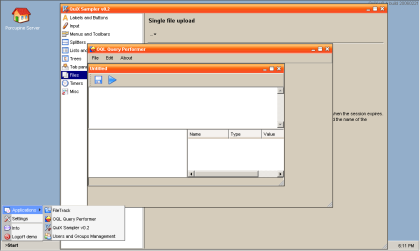
Porcupine is created by software developer inno:script, and, as such, is labeled "a web application server that provides an object oriented framework for developing web applications rapidly." The online version is only a demo, but the product is actively supported - the last update on the project is from March 14th 2006. There are neither fancy skins nor games in Porcupine. It is very sober-looking. Still, it is an innovative appoach to both web interfaces and programming; for that it gets a well-deserved place in out Top 5 list.
4. GoGui 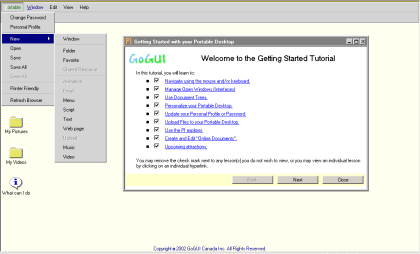 GoGui is a "Portable Desktop". It is somehow limited in options, as it offers only file managemet, rudimentary text-processing and notes. It is, however, fairly simple to use and with a little imagination one can imagine it growing into a more developed product, with more features. It integrates well with already installed software. GoGui resembles the Windows 98 interface and has right-click menus. It is a stable platform, but somewhat under-performs in the style and number-of-options departments.
3 .WadgetOS 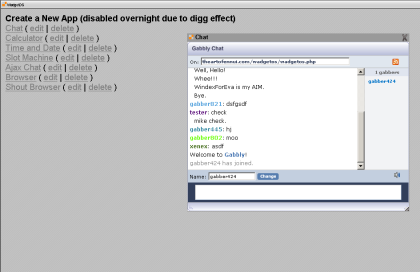
Wadget OS is fairly new, created by a small team, and it is still rough around the edges. Its most interesting feature is the option to create a new application within Wadget OS, using PHP (on the screenshot, you can see the backside of your site being massively dugg). Wadget also features a simple chat program. By combining the availability of strictly mainstream and programming tools, this web-based is a true demonstration of the power of AJAX. Although very simplistic, the design only hints that there is much room for growth.
2. JS/UIX 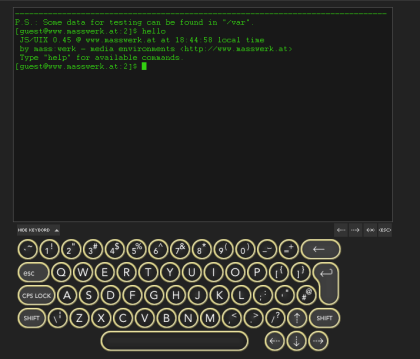
You gotta love this one! Somewhere on the verge between minimalistic and uber-geek, JS/UIX is a powerful fashion statement. Do not, however, be fooled - it is a working and well thought-out application. JS/UIX is UN*X-like OS for standard web-browsers, written entirely in JavaScript (no plug-ins used). It comprises a virtual machine, shell, virtual file-system, process-management, and brings its own terminal with screen- and keyboard-mapping. Well, it is not exactly a "desktop" -- but operation systems have been around longer than desktops, and for implementing that in a web browser JS/UIX gets the silver.
1. EyeOS 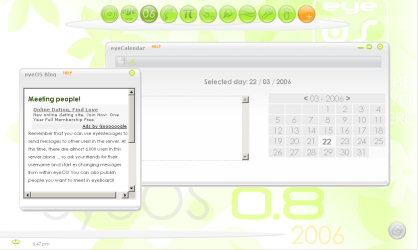
Here we are, ladies and gentlemen, at the top of the Top 5 list. What we find at the top is an application that comes closest ot the functionality of a traditional desktop. More importantly, EyeOS can actually be useful. That is shown by the vast community, and the ongoing work on translating and improving the project. EyeOS' design is streamlined and intuitive. A number of themes are offered. The tools include a word processor, messaging system, calendar, contact list, calculator, and more. EyeOS is unique because it is a working web-based desktop with the potential to create a loyal following. In that it fulffils the two major requirements for a working Web 2.0 product - a lively community and trendy web-based interface. EyeOS is currently the best AJAX platform to offer so many features, and also have the look and feel of a well-polished online desktop. That is, until GoogleOS comes around. Congratulations to the EyeOS team!
The runner-ups:
Robin: Does not work in Internet Explorer but has a decent collections of games instead.
httpWM: Based on Fluxbox, incompatible with Internet Explorer. Nice penguin, though...
Maxigate: Does not offer its own services but a collection of links to Web 2.0 applications. DesktopNEO In very early stage of development. Goowy Quite nice, actually. May as well rock when all features are enabled. Why did they call it Goowy?
|